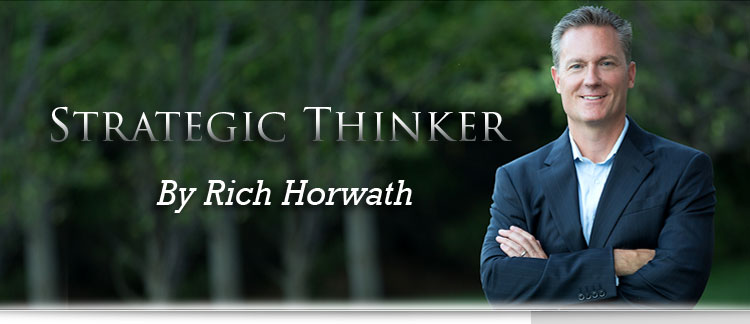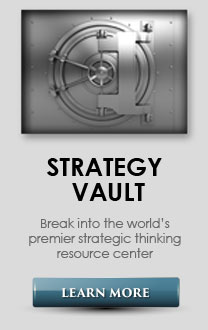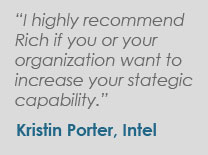
Reallocate to Revitalize"We are what we repeatedly do." Perhaps no phrase is more hauntingly true in both a positive and negative light than this opening quotation. Olympians are world-class athletes because of the thousands of hours of physical and mental training they invest in each year. Actors and actresses starring in Broadway productions have made it there because they invest hundreds of hours each month practicing the craft of character development. On the flip side, those of us that could stand to lose a few pounds may invest more time eating than exercising. And some managers may invest more time in meetings checking their smartphones or tablets than listening to colleagues, missing the insights that can lead to a shared understanding of the business. To reach any new outcome or goal we seek, we need to change how and where we invest our resources. Simple in concept, difficult to do. In a business context, if you can strategically allocate—and just as important—reallocate your resources to the right activities at the right levels, you'll give yourself the greatest chance to succeed. A study of 200 large organizations by McKinsey & Company identified the number one driver of revenue growth to be the reallocation of resources to the faster-growing parts of the business. Unfortunately, most companies don't do it. In fact, research shows companies allocate 90 percent or more of their resources to the same activities in the same ways, year after year. Consider your group: how often do you reallocate resources—time, people and budget—throughout the year from underperforming areas to ones with greater performance? If it's only once a year during the annual strategic planning process, you're not even coming close to maximizing your revenue potential. As Walmart CEO Doug McMillon said, "Once upon a time a company like ours might have made big strategic choices on an annual or quarterly cycle. Today strategy is daily. As a CEO, you need to have a framework in your mind, but strategic thinking is much more fluid. Like it or not, strategy is happening on a much faster cycle time." An exercise leadership teams find of great value involves a strategy conversation and working session around the reallocation of resources. Using a seven-step process, the team identifies resource pods, or focal areas that receive significant amounts of time, people and budget. They then gauge their current allocation levels to the pods and discuss potential calibrated allocation levels, including both intended and unintended consequences of the potential actions. Visually graphing the outcomes of these steps can generate eye-opening, aha moments, that create the urgency to change. In one such case, a leadership team realized they were investing no resources in understanding their competitor's strategies, which had led to an erosion of their market share as well as virtually no perceived differentiation from the customer's perspective on their offerings. The strategy conversation around the reallocation of resources must be skillfully facilitated. We as human beings are inclined to prefer the status quo, especially when reallocating resources requires changes that may decrease a manager's head count, budget or both. As Pieter Nota, CEO, Philips Consumer Lifestyle thoughtfully remarked, "It's hard to take resources away from one area and deploy them elsewhere, particularly with a strong team. Everyone tends to treat the past as an entitlement. But with the right trust between teams and a willingness to reward those who drive higher profits and sales growth, you can get significant top- and bottom-line improvements with resource reallocation." While it can be challenging to reallocate resources, it's critical to long-term success. A study tracking companies' resource allocation trends during a 15-year time frame found that the companies reallocating the most resources across divisions saw shareholder returns 30 percent higher than the companies that reallocated the least. In addition to being an important contributor to organizational success, reallocation is also a key factor in an individual's success. Research shows that chief executives who reallocated resources the most during their first three years were significantly more likely than CEOs who reallocated less frequently to still be in the role in year four. I recently had an introductory conversation with the CEO of a mid-sized manufacturer. He was interested in developing a strategic plan because the company's sales had been stuck on a plateau for the past several years and the competitive landscape was becoming more crowded. The leadership team worked from an operating plan that captured the status of projects, internal systems and processes along with a detailed budget, but he knew something was missing. He described the management team as being overly focused on tactics and not able to elevate their thinking out of the day-to-day. When I asked how much time he allocated during his senior leadership team meetings to this type of higher level, strategic thinking and discussion...crickets. We talked about the amount of time, number of people and financial investment that would be required for the company to embark on a strategic thinking and planning process along with the resulting strategic direction and plan that he identified as missing. He assessed those investments in strategy as "really high," so I asked, "High relative to what? Consider all the resources you're investing in tactics such as advertising, trade shows, marketing campaigns and sales materials. Is that the same amount as the investment for strategy?" "No," he replied, pausing for a few moments to make a mental calculation. "I guess the amount of resources we allocate to the tactical stuff would be considerably more than the amount we allocate to strategy." "Two or three times higher?" I asked. "Actually, about 40-50 times higher," he answered. If you're investing nearly all your resources in tactics, then you will have tactical managers running a tactical company. Organizations of all shapes and sizes get themselves involved in tactical arms' races, reacting to each and every tactic from the competition with versions of their own, leading to competitive convergence. Instead, they could be investing more of their time into strategy conversations about reallocating resources and developing the strategies that lead to competitive advantage. As entrepreneur Ramit Sethi said, "Tactics are great but tactics become commoditized." If "we are what we repeatedly do," ask yourself what you really do as a manager. Do you like the answer? If not, review what you do and reallocate to what you want to be. |








